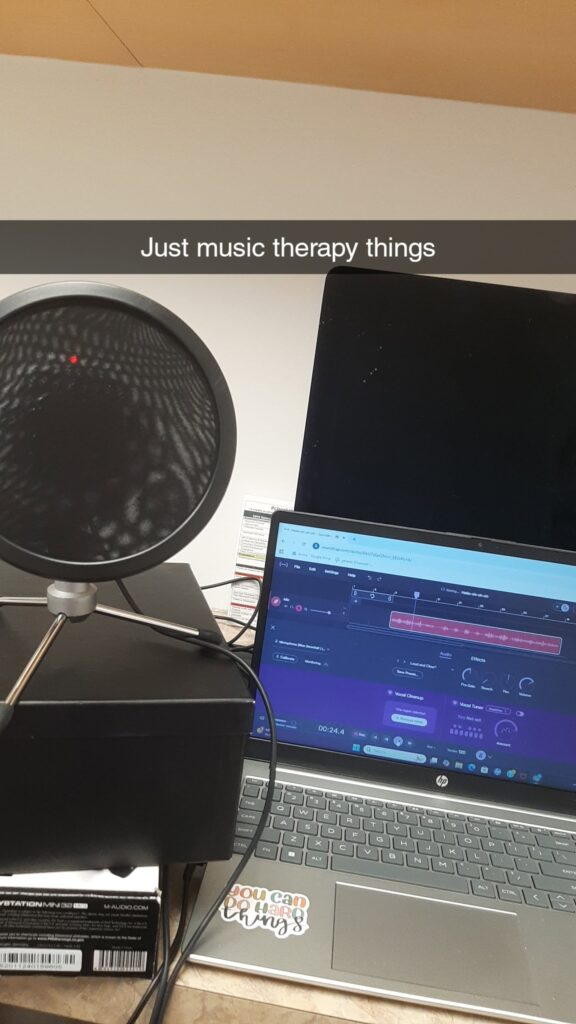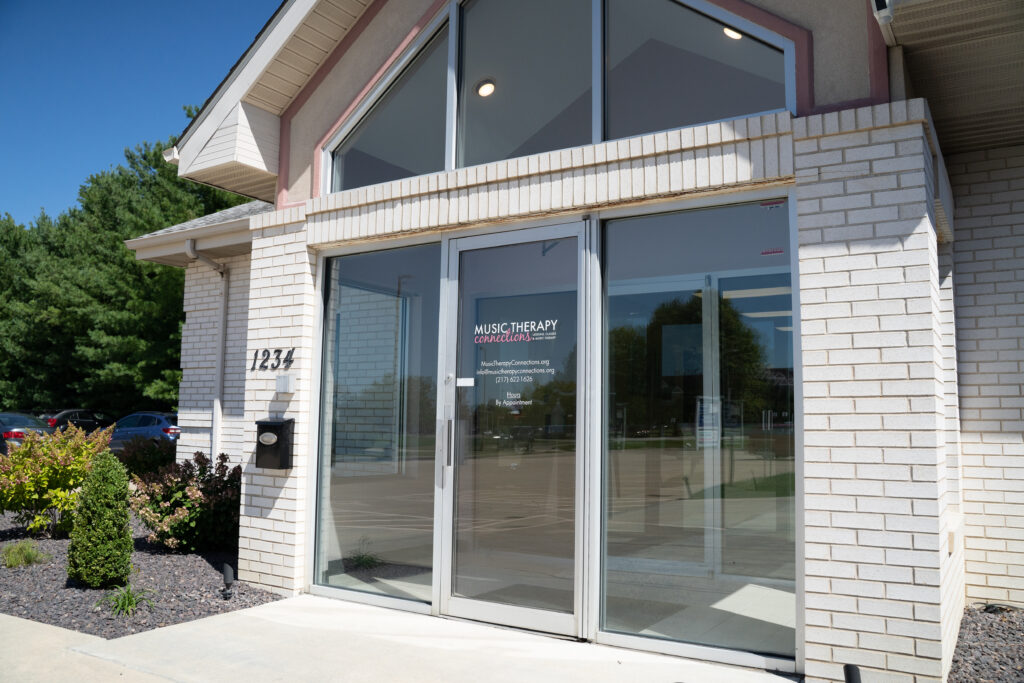
As part of my internship, I have weekly assignments, some of which contribute to larger projects like my midterm. For these assignments, I have to write and record songs. While I have written songs for myself and for sessions at WIU, this is my first time recording them. At first glance, it can be really daunting, but like many things, it gets easier with practice.
For these recording projects, I have been using SoundTrap. I have used GarageBand once on my iPad, but recording is much easier on a laptop. GarageBand is the product I hear most about, but since my computer is not an Apple product, I do not have access. Lucky for me, one of my colleagues also doesn’t have an Apple computer and recommended SoundTrap. I am not good with technology, but the process of recording has been super straightforward.
Materials
Of course, you need my laptop to create any of this. You also need a microphone and any instruments you are going to use. Some things you may not have thought of, though, are headphones and a MIDI chord. Headphones will help when you are recording. You need to hear what you are recording over, but you don’t want it playing out loud, so that it can’t be picked up in the recording, plus you can just hear it better over headphones. A midi chord is going to be very helpful when it comes to adding piano. This way, you can plug it into your keyboard, and what you play is directly recorded onto the software. You can also use MIDI to record a baseline, synth, or even a guitar riff.
The Groundwork
I found out early on to start with a big, loud, steady beat. My supervisor, Katey, had suggested starting with a beat, but I thought the metronome was enough. Spoiler alert, it wasn’t. I found out quickly that no matter how steady a beat I thought I had on the guitar, I was wrong. When creating the drum rhythm, it shows you a grid broken down to the sixteenth level of each beat. It also gives you many choices of drums, starting with kick, snare, and highhat. To give myself a steadying pulse, I had the kick drum play on every beat in a measure. I started with this. Nothing fancy, just a pulse that I could blast through my headphones.
The Guitar
The hard part, at least for me, was recording the guitar. I had to have my steady pulse turned way up in my ears to try and keep up with it. I didn’t realize until recording how easy it is to get slightly off beat when playing guitar. It wasn’t noticeable to me until putting a computer-created drum beat, that is never off, alongside it. This part took me quite a lot of time for each song I recorded.
There are multiple ways to do it. You can chunk it. You can find natural stopping points in the song and record up to or from that point. This can change by the song. Some don’t lend themselves to this way as easily. You can try to record the whole song in one take. I did this often, and it was hard. If your song repeats, you can record that section and loop it. Which can be tricky when it comes to lining up with the beat, but it’s not impossible. I have done a mixture of all three. Commonly, I started off trying to record the entire song. If there were mistakes and I didn’t want to rerecord the entire thing, I would split the track and try to record that one spot. After recording, I would change the sound of the amp. There are many choices to choose from. I always chose “clean” so there were fewer effects and sounded more like my guitar. Once I had a guitar track I was happy with, I did not touch it again.
The Next Step
My next step was to record the main vocals. Once your beat and guitar track are set, recording vocals is easier. Like the guitar, you can do a single take or break it into chunks, but it’s easier to chunk vocals since you can pause after each verse or chorus.
The Fun Stuff
After I had my basics, which were all that was required of me, I could just mess around and add what I thought sounded good.
Diversifying The Beat
At this point, the only beat I had was a steady pulse. Now that I recorded the vocals and guitar and can hear it all together, I find it easier to add on to the drum rhythm. Make it more complicated than just a pulse, if I want to. I’m not super knowledgeable when it comes to making drum beats, so I just mess around until I find something I like. There are also pre-done tracks that you can add for anything, not just guitar. I personally use the pattern makers to create my rhythms, but there is a drum kit option too. Like with the guitar, you can change the sound of the drum.
Using The MIDI Keyboard
When I hear the word keyboard when talking about music, I assume piano. While a piano is involved, you can use a MIDI keyboard to create different sounds. On Soundtrap, you can use it for piano, synth, bass, guitar, and even orchestral instruments. You can do it using your computer keyboard, but it is easier to do on an actual keyboard. To do it on a keyboard, you use a MIDI chord. One end plugs into the computer and the other into the keyboard. You can then change it to whatever instrument sound you want. Just like playing piano, you play the pitch you want, and it is recorded. I used this feature to add guitar riffs, bass lines, piano background, and synth.
Last Touches
You are almost done! The last thing I mess with is the balance. On the left side of the screen, it shows you all your tracks. It is easy to adjust the volume and reverb on each track. Once I am happy with how it sounds, I save it multiple times and then download it as an MP3 file. It can be a lot of work, but it is always so cool to hear the final product and know you created it.

